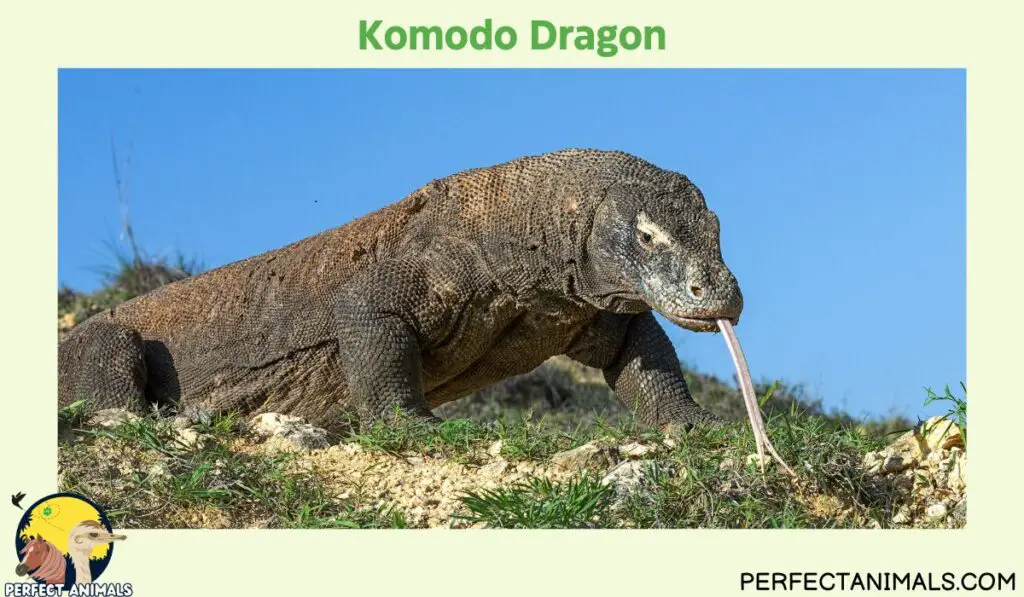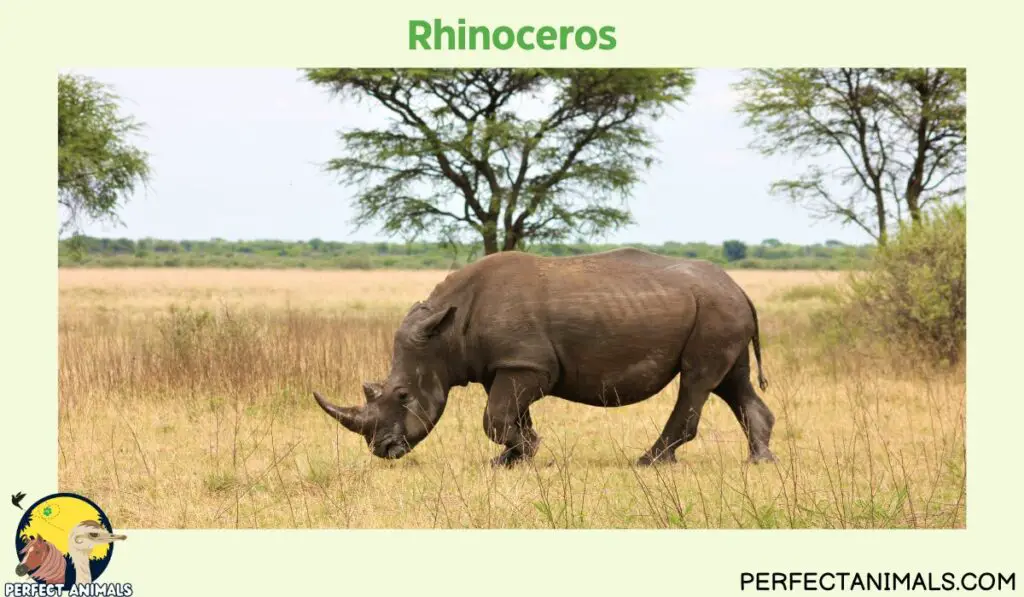In the animal kingdom, most species fall somewhere in the middle of the food chain.
They hunt smaller prey, while also being hunted by larger predators.
However, a handful of powerful animal species around the world have no natural predators to fear under normal circumstances.
These intimidating creatures reign supreme in their domains. Whether on land, in water, or ruling the skies, apex predators play an essential role in maintaining balanced ecosystems.
Yet they also pose formidable threats to humans who encroach on their territory.
In this article, we will explore some of the planet’s most dominant hunters that can described as nearly “invincible” in the natural world.
From icy waters to tropical forests, we will span the globe to uncover these fascinating beasts at the top of their food chains with no equals hunting them for food in the wild.
Animals With No Natural Predators
Killer Whale
Few creatures command the oceans with sheer power and intelligence like the killer whale (Orcinus orca).
As the undisputed apex ocean predator, killer whales feast on a buffet of prey including fish, squid, seals, dolphins, sharks, and even larger whale species.
Their only threat comes from humans. Otherwise, no other animal dares attack a healthy adult killer whale.

Traveling in close-knit pods led by experienced matriarchs, killer whales cooperate to take down prey many times their size.
Though they generally don’t bother humans, their capabilities inspire primeval fears of being dragged into the ocean depths.
Equipped with muscular bodies reaching over 30 feet long and weighing up to 12,000 pounds, killer whales do well in arctic to tropical waters thanks to thick blubber and complex communication.
Their distinctive black-and-white markings conceal ruthless hunters and tender caregivers for their young.
From birth, killer whales hone sophisticated hunting techniques passed down among generations.
Ultimately, the combination of physical power, family bonds, intelligence, and hunting prowess enables killer whales to thrive as unrivaled rulers of the sea.
Related Article – Orcas Eyes | Amazing Facts
Sperm Whale
If any creature symbolizes “no natural predators,” it is surely the mighty sperm whale (Physeter macrocephalus).
As the largest toothed whale and biggest brain on Earth, sperm whales command respect throughout the world’s oceans even from killer whales.
They are apex predators equipped to dive deeper than any other mammal, far beyond where predators lurk, in pursuit of giant squid and deep-sea fish.

Their immense box-shaped heads, spanning up to a third of their total body length, house the planet’s largest brain at around 18 pounds.
This allows them to emit ultrasonic clicks to stunned prey in lightless depths over 9,000 feet down.
Almost indestructible even against modern harpoons, the thick blubber of adult bull sperm whales protects them from threats.
Females band together in protective circles with young calves inside when facing attack.
Roving globally from equatorial to polar waters, these giants remain out of reach from predators big enough to theoretically attack them.
Aside from skirmishes with killer whale pods and old whales falling to ship strikes or entanglement, sperm whales enjoy protection by their sheer size and power.
Electric Eel
With the power to unleash lethal electricity equal to a lightning bolt, electric eels dominate the Amazonian freshwaters they inhabit.
Growing over 8 feet long and 44 pounds, these apex predators troll the waterways of northern South America in search of fish, amphibians, and even birds.

Their slender, snake-like bodies conceal specialized organ cells that deliver painful shocks. Smaller animals stand no chance against an electric eel, nor do most predators.
Only the fearless otorongo (jaguar) poses a threat if water levels recede enough during the dry seasons to enable a successful ambush of the eels.
Otherwise, their mastery over pulses of electricity keeps them safely at the apex of river food chains.
Capable of knocking over a horse or grown man at full blast, electric eels employ varying strengths of voltage to track prey, deter threats, and signal between members of their own species.
Aside from avoiding human-made dams and pollution damaging their sensitive tissues, electric eels have reigned as unrivaled hunters in their murky habitat for millennia thanks to their uniquely evolved defenses and offenses.
You May Also Like – Do Barracudas Eat Fish Eggs?
Saltwater Crocodile
Few apex predators inspire more innate terror than the notorious saltwater crocodile (Crocodylus porosus).
As the largest living reptile species on Earth today, growing over 20 feet long and 2,000 pounds, these colossal crocodilians rule the rivers, marshes, and mangroves of coastal India, Southeast Asia, and northern Australia.
Saltwater crocodiles command tremendous bite force to subdue everything from water buffalo to sharks unlucky enough to venture into their domains.

Once they clamp down with 3,700 pounds per square inch of pressure, their victims have no hope of escape.
The only possible threat to an adult crocodile is rivalry with their own kind over territory and mates during breeding season when males fight aggressively.
But otherwise, the armored hides and supreme ambush abilities of saltwater crocodiles keep them firmly entrenched as unmatched apex aquatic predators across their range.
Capable of swimming out to sea between river systems and lying in wait for extended periods before explosively attacking, they can exploit diverse habitats.
Given their longevity over 70 years in the wild, a dominant male saltwater crocodile will likely enjoy decades ruling his stretch of river or wetland unchallenged at the top of the food chain.
Komodo Dragon
As the world’s largest lizard, Komodo dragons epitomize an apex predator completely dominant over prey and rivals alike.
Growing over 10 feet long and 330 pounds, they rule the volcanic Indonesian islands they inhabit either solo or in small groups.
No other predators pose a lethal danger to them due to their whip-like tails, curved claws, and serrated teeth ideal for slashing through flesh and bone.

Komodo dragons also deliver devastating bites injecting bacteria to slowly kill an escapee.
They can eat a staggering 80 percent of their body weight at once after making a successful large kill.
Despite their lumbering appearance, Komodo dragons attack swiftly by rushing short distances to knock prey temporarily immobile.
From wild boars to buffalo and the deer populate their island habitats, Komodo dragons relentlessly pursue large challenging prey other predators would avoid.
Their venomous bites, size, strength, and appetite ultimately make them invincible conquerors over the native wildlife community.
Only occasionally does competition over a desired mate or prime territory create conflict between these dominant predators occupying the top of their islands’ food webs with impunity.
You May Also Like – 18 Amazing Animals With Long Necks
Harpy Eagle
Soaring high among the upper canopy of Central and South American rainforests, Harpy eagles (Harpia harpyja) rule the skies as aerial apex predators without equal.
As the most powerful raptor in the Americas, these enormous eagles can measure over 3 feet long with 7-foot wingspans and weights approaching 20 pounds.
They draw their name from the ruthless harpies of Ancient Greek mythology.

Once airborne, no other birds or arboreal mammals stand a chance against their mighty talons.
Harpy eagles hunt sizable sloths, monkeys, opossums, coatis, and large tree-dwelling rodents either solo or coordinately in mating pairs.
Though capuchin monkeys and macaws may harass a perched harpy eagle, and anacondas occasionally raid their nests, no predators can threaten an adult.
Possessing tremendous aerial agility and sharply curved talons as long as grizzly bear claws, harpy eagles dominate the rainforest canopy.
They symbolize an elite predator entirely self-reliant and without the need to bow to an ecological competitor in their forested hunting grounds spanning southern Mexico to Argentina.
Rhinoceros
As one of the largest land mammals on Earth, rhinos inhabit a nearly impenetrable fortification of thick hide armor plating their bodies from head to toe.
The most massive rhino species, white and black rhinos of Africa, weigh over 3 tons as adults at up to 6 feet tall and 13 feet long.
Their foremost weapon comes from their namesake horn made of keratin fibers atop the snout.

While rhino horns help forage by pushing aside branches and digging for salt licks, they also serve as a formidable deterrent and defense against predators.
No carnivores in their African ranges like lions, hyenas, or African wild dogs will risk a full-grown adult rhino’s deadly horn strikes and vicious charges.
Only bold Nile crocodiles may ambush stray calves or injured adults separated from the herd.
Overall, the true apex predators of Africa show a healthy respect for adult rhinos marching about in small familial groups.
Despite their poor eyesight and lumbering gait, rhinos demonstrate power and thick-skinned resiliency aptly conveying their secure place among Africa’s elite specialists totally devoid of natural predators.
You May Also Like – Animals With Curly Horns
Wolves
Few apex predators encapsulate the essence of wilderness like the gray wolf inhabiting regions across the Northern Hemisphere.
As highly social and intelligent hunters evolved to traverse vast distances and survive frigid winters, gray wolves (Canis lupus) function as the consummate predators within their domain from Alaska to western Europe.

Moving in complex hierarchical packs typically led by a dominant breeding pair, gray wolves work as skillful units to run down large prey like elk and caribou otherwise safe from solitary predators.
No other species regularly prey upon gray wolves across most of their range.
Aside from obvious danger from humans, only fellow wolf packs, brown bears, and tigers pose sporadic threats in narrow overlap zones.
for the most part, the combination of tight-knit pack structure, sharp senses, stamina to run the prey to exhaustion, and ability to swiftly regroup make gray wolves invincible hunters unyielding to competitors.
They thrive from remote tundra to boreal forest and alpine regions by outlasting every other native predator while cooperatively nurturing the next generation of their strongest offspring to bolster the pack.
Elephants
As the largest land mammal currently walking the earth, African elephant (Loxodonta africana) adults exceed 13 feet tall and 15,000 pounds on average.
These titanic herbivores roam the sub-Saharan savannas and forests in tightly knit, matriarch-led groups demonstrating deep familial bonds across generations.

Virtually no predators will provoke an adult African elephant thanks to their daunting size and capacity to fatally gore or trample aggressors.
Except for isolated calves briefly left vulnerable when separated from the maternal herd, lionesses are the only predators with the potential to successfully ambush stragglers under vulnerable circumstances.
Otherwise, elephants react aggressively and band together trunk-to-tail to ward off threats while the matriarch charges forward with tusks slashing.
This intimidating display of collective might facing down challengers earns African elephant families respect across the greatest expanses of Africa inhabited by every other dangerous megafauna species on the planet.
So whether defending precious waterholes in times of drought or foraging deep into lion pride’s core territory, mature African elephants march forward confidently aware of their invincibility.
You May Also Like – 5 Types of Rabbits in Texas
Tigers
Among the great cats, tigers stand apart as rugged apex predators ruling Asia’s jungles unopposed.
Weighing up to 660 pounds, tigers rely on stealth and explosive ambush tactics to pin down everything from fleet-footed deer to massive gaurs.
Their iconic orange and black-striped fur provides ideal camouflage when hunting prey as large as bears and crocodiles.

Tigers keep even packs of dholes and competitive leopards on the run to retain exclusive prime territory.
Once a tiger bites down, their powerful jaws generate over 1,000 pounds of pressure combined with razor claws that can swipe with 500 pounds of force.
After a successful hunt with their spinal cord severed, heavy prey poses no further fight.
Only humankind poses any semblance of threat to the world’s largest feline.
Further easing their reign over Asia’s jungles, tigers maintain no rigid social structure beyond rearing litters as solitary hunters.
With no natural predators to check thriving tiger populations, jungles echo with their iconic roars signaling a dominant presence keeping all other predators firmly in their place.
Constrictor Snakes
While perhaps not the first dangerous predators conjured in one’s imagination, the massive constricting snakes of the subtropics certainly qualify as apex predators unmatched in their realms.
Reticulated pythons of Southeast Asia and anacondas of the neotropics represent snake species attaining truly gargantuan proportions over 25 feet and 550 pounds.

Preying upon everything from deer and pigs to caimans and jaguars, these snakes ambush quadrupedal animals and overwhelm them within looping coils of thick muscle steadily tightening.
No other species regularly attack adult constrictor snakes to eat as prey, besides chiefly other snakes engaged in cannibalism and territorial disputes.
Their neutral color patterns allow them to blend into the rainforest floor before exploding upwards to seize an unsuspecting victim passing by.
Conservatively estimated to squeeze with over 90 pounds per square inch of constriction pressure, they dispatch prey through suffocation and cardiovascular collapse within minutes.
So while perhaps not traditionally beloved apex predators, giant constricting snakes certainly epitomize invincible hunters occupying the top of forested food chains.
You May Also Like – Are Pied Ball Pythons Right for You?
Polar Bear
Lords of the frozen Arctic, polar bears reign as the largest land carnivore whose habitat lies exclusively in or around sea ice year-round.
Weighing over 1,500 pounds as males, polar bears rely on thick blubber and water-repellent fur to brave bitter subzero temperatures and frigid waters stalking ringed seals atop ice flows.

Despite their enormous size, polar bears display tremendous agility across snow, and ice, and swim for miles between patches of sea ice where they rule supreme.
There is no other terrestrial mammal in their range that habitually preys on polar bears, including packs of arctic wolves respectfully avoiding confrontation.
While males spar violently for breeding rights and even cannibalism occurs under scarce resources, polar bears exist untouched atop the Arctic food web when conditions are favorable.
Today the greatest looming threat is actually their world melting around them via climate change.
But from the seasoned giant males who claim entire ice sheets as their domains down to emerging cubs just learning to hunt, polar bears have thrived thus far as the only uncontested apex predators of the brutal northernmost latitudes on Earth.
Related Article – Do Orcas Eat Polar Bears?
Final Thoughts
In the end, the animals highlighted in this article represent astounding diversity – from saltwater crocodiles to polar bears, no species regularly preys upon these mighty predators in the food chain.
These beings have earned their status and historic awe as pinnacles of their realms through sheer evolutionary physical advantage and honed instincts that guide survival and success across generations.
For all the challenges and changes nature and humankind present, these apex hunters remain steadfast in their role reigning as masters over their wild domains.
While sharing fundamental similarities of strength, strategic hunting, and lack of predators, they convey the beautiful variance nature has devised to rule ice caps and jungles alike through the ages.
But whether they inspire instinctual fear or admiration, these invincible predators shall endure into the future and continue fulfilling their place atop the food web in environments both familiar and exotic to human understanding.
These elite hunters represent far more than just the largest or most dangerous beasts – they are the ultimate equals.
Resources – (for further reading)
Wikipedia – Apex predator
Britannica – Apex predator | Definition, Examples, & Facts
National Geographic – Orcas (Killer whales)

Brittney , a devoted exotic pet enthusiast, showcases her profound passion for the animals through her role as a veterinary technician. With a strong background in caring for a diverse array of animals, she shares her expertise by crafting engaging articles about exotic pets for our blog.

